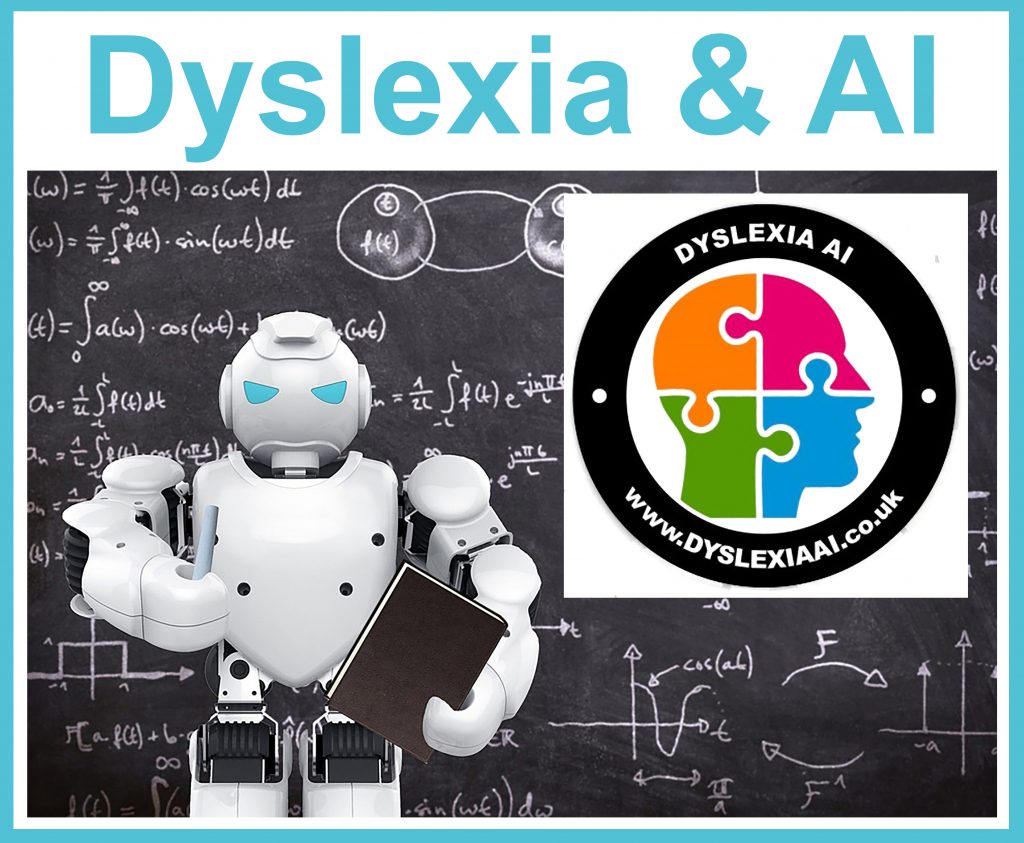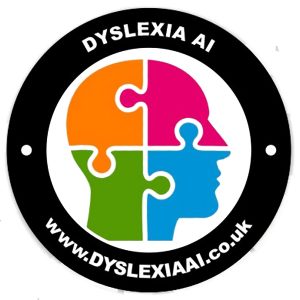
Dyslexia & AI
Understanding Dyslexia
Dyslexia is a neurological disorder that affects a person’s ability to read, write, spell, and sometimes even speak. It is a common learning disability that affects approximately 1 in 10 people worldwide. Dyslexia can vary in severity, with some people experiencing mild difficulties, while others struggle with severe challenges.
Dyslexia is a lifelong condition that often runs in families. It is not a result of poor teaching, lack of intelligence, or vision problems. Instead, it is caused by a difference in the way the brain processes language. People with dyslexia have difficulty processing the sounds that makeup words, which can make it challenging to decode written words and understand what they mean.
One of the main characteristics of dyslexia is difficulty with phonemic awareness, which is the ability to recognize and manipulate the individual sounds in words. For example, a person with dyslexia may have difficulty recognizing that the word “cat” is made up of three separate sounds: “k”, “a”, and “t.” This can make it challenging to sound out words and understand their meaning.
Another common characteristic of dyslexia is difficulty with reading fluency. People with dyslexia may read slowly and struggle to keep up with their peers. They may also have difficulty with comprehension, as they struggle to make sense of the words they are reading.
Dyslexia can also affect a person’s ability to write and spell. People with dyslexia may have difficulty with grammar and syntax, and they may struggle to organize their thoughts into written sentences and paragraphs.
It is important to note that dyslexia is not related to intelligence. Many people with dyslexia are highly intelligent and talented in other areas, such as art, music, or athletics. However, because dyslexia affects reading and writing, it can have a significant impact on a person’s academic performance and self-esteem.
Fortunately, there are many strategies and accommodations that can help people with dyslexia overcome their challenges and succeed in school and in life. For example, some people with dyslexia benefit from multi-sensory learning techniques, which engage multiple senses (such as sight, sound, and touch) to help reinforce learning. Others may benefit from assistive technology, such as text-to-speech software or speech recognition software.
It is also important for educators, parents, and other caregivers to be aware of the signs of dyslexia and to provide appropriate support and accommodations. Early identification and intervention can make a significant difference in a person’s ability to succeed academically and in life.
Why Do People Have Dyslexia
The exact cause of dyslexia is not fully understood, research has shed some light on why people have dyslexia.
One theory is that dyslexia is caused by a difference in the way the brain processes language. Specifically, people with dyslexia have difficulty processing the sounds that makeup words, which can make it challenging to decode written words and understand what they mean. This difficulty with phonemic awareness is thought to be caused by differences in brain structure and function.
Recent research has identified specific regions of the brain that are involved in reading and language processing, and studies have shown that these regions function differently in people with dyslexia. For example, studies using functional magnetic resonance imaging (fMRI) have shown that the areas of the brain that are responsible for processing sounds and connecting them to written words are less active in people with dyslexia.
There is also evidence to suggest that genetics may play a role in the development of dyslexia. Studies have shown that dyslexia often runs in families and that there are certain genes that may be associated with the condition. However, it is important to note that genetics is not the only factor involved in the development of dyslexia and that environmental factors may also play a role.
Environmental factors that may contribute to dyslexia include exposure to toxins or infections during pregnancy, as well as early childhood experiences such as lack of exposure to language or poor nutrition. However, it is important to note that these factors do not directly cause dyslexia but rather may contribute to the development of the condition in individuals who are already predisposed to it due to genetics or other factors.
It is also worth noting that dyslexia is not related to intelligence. Many people with dyslexia are highly intelligent and talented in other areas, such as art, music, or athletics. However, because dyslexia affects reading and writing, it can have a significant impact on a person’s academic performance and self-esteem.
While the exact cause of dyslexia is not fully understood, research has shed some light on the differences in brain structure and function that contribute to the condition. With the right support and accommodations, people with dyslexia can overcome their challenges and succeed in school and in life.
How People Cope With Dyslexia
Coping with dyslexia can be challenging for individuals and their families, but there are several resources available to help them manage the condition.
People with dyslexia may experience difficulties with phonemic awareness, word decoding, reading fluency, and spelling. They may also struggle with memory, time management, and organization skills. These challenges can impact academic performance, social interactions, and self-esteem.
One of the most effective ways to cope with dyslexia is to seek appropriate interventions and accommodations. Some individuals with dyslexia may benefit from specialized tutoring or instruction that focuses on phonics, fluency, comprehension, and writing skills. Others may require assistive technology such as text-to-speech software, speech recognition software, or electronic spell-checkers.
In addition to academic support, people with dyslexia may also benefit from emotional and psychological support. Many individuals with dyslexia experience feelings of frustration, anxiety, and depression as a result of their struggles with reading and writing. Seeking therapy or counseling can help them develop coping strategies and improve their self-esteem.
There are also several organizations and resources available to support individuals with dyslexia and their families. The International Dyslexia Association is a nonprofit organization that provides resources, support, and advocacy for individuals with dyslexia. They offer conferences, workshops, and online resources for parents, educators, and individuals with dyslexia.
The National Center for Learning Disabilities is another organization that offers support and resources for individuals with dyslexia and other learning disabilities. They offer a free online resource called “Understood” which provides personalized resources and support for families and individuals with learning and attention issues.
There are also several assistive technology options available for individuals with dyslexia. Text-to-speech software, such as Read&Write or Kurzweil, can help individuals with dyslexia read and comprehend text more easily. Speech recognition software, such as Dragon Naturally Speaking, can help individuals with dyslexia write more efficiently.
Dyslexia can be challenging to cope with, but there are many resources available to support individuals with dyslexia and their families. Organizations such as the International Dyslexia Association and the National Center for Learning Disabilities offer valuable resources and support for individuals with dyslexia and their families.
How Children Should Be Supported With Dyslexia
Dyslexia can be frustrating and challenging for children who have dyslexia, but with the right support, they can thrive academically and personally.
Here are some ways that children with dyslexia can be supported:
- Early intervention: Early intervention is crucial for children with dyslexia. The earlier a child is diagnosed, the earlier they can receive support and interventions to help them learn to read and write. Dyslexia can be identified as early as preschool age, so it’s important to be aware of the signs and symptoms and seek out an evaluation if you suspect your child may have dyslexia.
- Multisensory learning: Children with dyslexia often have difficulty with phonics and decoding words. Multisensory learning, which engages multiple senses such as sight, sound, touch, and movement, can be helpful for these children. Multisensory learning techniques can include using sandpaper letters, tracing letters in the air, and using colored overlays to reduce visual stress.
- Assistive technology: There are many assistive technology tools that can help children with dyslexia. Text-to-speech software can read text aloud, which can be helpful for children who struggle with reading. Speech-to-text software can be used to help children with dyslexia write, as they can dictate their thoughts instead of having to write them down. Dyslexia-friendly fonts and formatting can also make reading and writing easier for children with dyslexia.
- Accommodations in the classroom: Children with dyslexia may benefit from accommodations in the classroom, such as extra time on tests, access to audiobooks, and having instructions written out or read aloud. Teachers can also provide explicit instruction in phonics and decoding, and use multisensory techniques to reinforce learning.
- Emotional support: Children with dyslexia may struggle with feelings of frustration, anxiety, and low self-esteem. It’s important for parents and teachers to provide emotional support to these children, and help them understand that dyslexia does not define them or their abilities. Encouragement, positive feedback, and celebrating small successes can go a long way in boosting a child’s confidence and self-esteem.
How AI Can Help With Dyslexia
Dyslexia can make learning challenging, and it can have a significant impact on a person’s academic and professional success.
The good news is that with the help of AI (Artificial Intelligence), people with dyslexia can now receive personalized assistance to improve their reading and writing skills. AI has opened up new opportunities for people with dyslexia to access the support they need to succeed.
Here are some ways AI can help with dyslexia:
- Speech Recognition: AI technology can help people with dyslexia by converting speech to text. This technology can help dyslexic students with their writing assignments, making it easier for them to communicate their ideas in written form. Speech recognition software is also helpful for those who have difficulty with spelling and grammar.
- Text-to-Speech: Text-to-speech (TTS) technology can help people with dyslexia by reading text aloud. This technology can help dyslexic students who struggle with reading comprehension, and it can also be used to proofread written assignments. TTS software can also be customized to read at different speeds, which can be helpful for people who have difficulty processing information quickly.
- Spelling and Grammar Checkers: AI-powered spelling and grammar checkers can help people with dyslexia by identifying and correcting spelling and grammatical errors. These tools can be used in conjunction with speech recognition and TTS software to improve writing skills.
- Personalized Learning: AI technology can provide personalized learning experiences for people with dyslexia. AI-powered adaptive learning platforms can identify a student’s strengths and weaknesses and provide customized lessons that focus on the areas where the student needs the most help. These platforms can also track progress and adjust the learning experience as required.
- Virtual Assistants: Virtual assistants like Amazon’s Alexa and Apple’s Siri can be helpful for people with dyslexia. These assistants can perform tasks like setting reminders, scheduling appointments, and sending messages without the need for written communication.
Are cerebellar atrophy and dyslexia linked?
Cerebellar atrophy is a neurological disorder characterized by the progressive degeneration of the cerebellum, a part of the brain that plays a crucial role in the coordination and control of movement. Dyslexia, on the other hand, is a learning disability that affects a person’s ability to read, write, and spell. While these two conditions may seem unrelated, there is evidence to suggest that there is a link between cerebellar atrophy and dyslexia.
The cerebellum is responsible for a range of motor functions, such as balance, coordination, and precision movements. However, research has shown that it is also involved in cognitive functions, such as language processing, attention, and working memory. One study found that children with dyslexia have smaller cerebellar volumes compared to their non-dyslexic peers, suggesting that the cerebellum plays a role in reading and language processing.
Another study used MRI scans to investigate the link between cerebellar atrophy and dyslexia. The researchers found that individuals with cerebellar atrophy had more severe reading difficulties compared to those without cerebellar atrophy, indicating that the cerebellum may play a role in the development of dyslexia.
The cerebellum is also connected to other parts of the brain that are involved in language processing, such as the frontal and temporal lobes. Some researchers believe that cerebellar atrophy can disrupt the communication between these brain regions, leading to difficulties in language processing and ultimately contributing to dyslexia.
Furthermore, research has shown that the cerebellum is involved in phonological processing, which is essential for the development of reading skills. Phonological processing involves the ability to manipulate and recognize sounds in language, which is a fundamental skill for reading. It has been suggested that cerebellar dysfunction can impair phonological processing, leading to difficulties in reading and dyslexia.
Conclusion
- Dyslexia is a common learning disability that affects a person’s ability to read, write, and spell. It is a neurological condition that is not related to intelligence and can have a significant impact on a person’s academic performance and self-esteem. However, with the right support and accommodations, people with dyslexia can overcome their challenges and succeed in school and in life.
- Children with dyslexia can thrive with the right support and interventions. Early intervention, multisensory learning, assistive technology, accommodations in the classroom, and emotional support are all important ways that children with dyslexia can be supported. With these tools and strategies, children with dyslexia can overcome their challenges and reach their full potential.
- AI technology has the potential to revolutionize the way people with dyslexia learn and communicate. With the help of AI-powered tools like speech recognition, TTS software, spelling and grammar checkers, personalized learning platforms, and virtual assistants, people with dyslexia can receive the support they need to succeed academically and professionally. AI technology is still evolving, and there is still much work in this field. However, the potential for AI to help people with dyslexia is tremendous, and we are just beginning to scratch the surface of what is possible.
- There is evidence to suggest that cerebellar atrophy and dyslexia are linked. While more research is needed to fully understand the relationship between the two conditions, these findings have important implications for the diagnosis and treatment of dyslexia. Identifying cerebellar atrophy in individuals with dyslexia may help to develop more targeted interventions that address the underlying neurological factors contributing to the disorder.
Final Notes From The Editor:
We have a text-to-speech widget already implemented on this site and plan to have our own ChatAI Bot soon www.renataai.com. We also have the domain name www.dyslexiaai.co.uk for organizations in the UK. We also offer a service to write content for people that might find writing challenging.
Dyslexia is a specialized subject and this domain would suit any organization with support on their websites. We can build a site that has AI integrated to help readers in their personal development. All dyslexia charities and self-help sites would benefit from having an AI widget on their site.

DOMAIN NAME FOR SALE!
Chat Open AI Video Tutorial
ADVERTISEMENT
We use an SEO link wheel of exact-match searchable keyword and phrase domains: UK Website Designers – Cymru Marketing – UK Content Writers
Our mother ship:
www.ukwebsitedesigners.co.uk
UK Website Designers is our main business, where we showcase all our linked sites and offer a range of services, including content writing and digital marketing.
We also own a digital marketing site:
If you found this article useful and would like us to write similar content, just contact us using the form below.

#dyslexia #dyslexiaai #reading #writing #contentwriting #learningdisabilities #cognitiveimpairment #neurologicaldisorder #assistivetechnology #texttospeech #speechrecognition
Renata The Owner & Editor of DisabledEntrepreneur.uk and DisabilityUK.co.uk Online Journals, suffers From OCD, Cerebellar Atrophy & Rheumatoid Arthritis. She is an Entrepreneur & Published Author, she writes content on a range of topics, including politics, current affairs, health and business. She is an advocate for Mental Health, Human Rights & Disability Discrimination.
Whilst her disabilities can be challenging she has adapted her life around her health and documents her journey online.
Disabled Entrepreneur - Disability UK Online Journal Offers Digital Marketing, Content Writing, Website Creation, SEO, and Domain Brokering. Disabled Entrepreneur - Disability UK is an open platform that invites contributors to write articles and serves as a dynamic marketplace where a diverse range of talents and offerings can converge. This platform acts as a collaborative space where individuals or businesses can share their expertise, creativity, and products with a broader audience.










Leave a Reply
You must be logged in to post a comment.